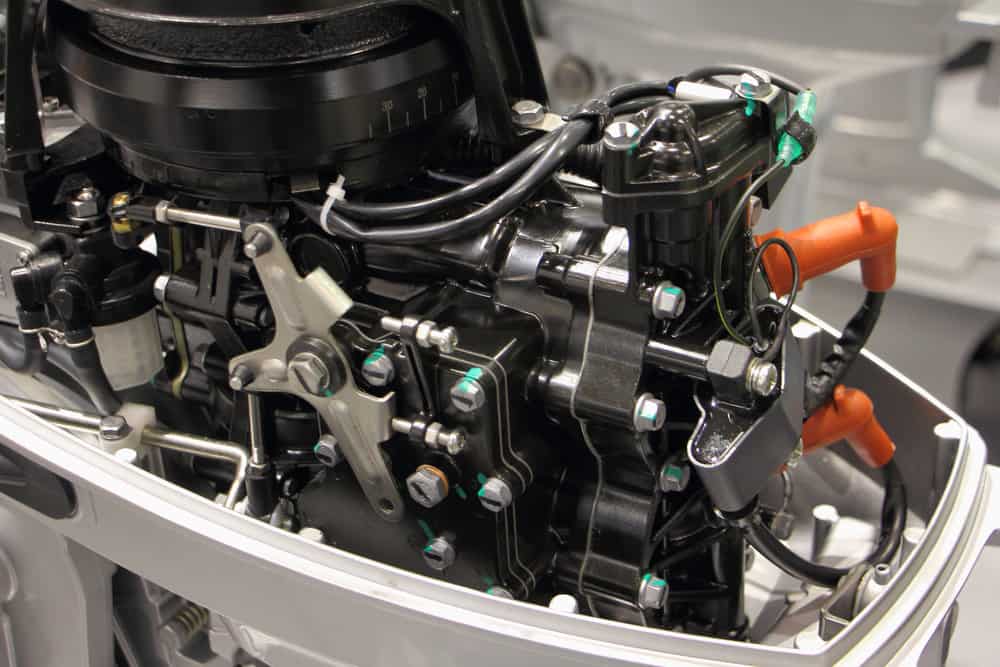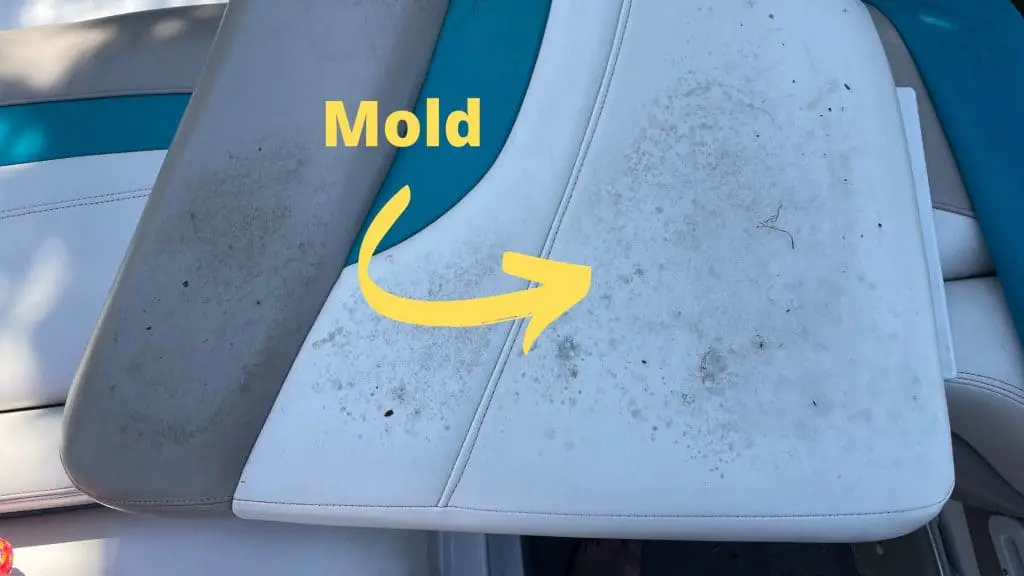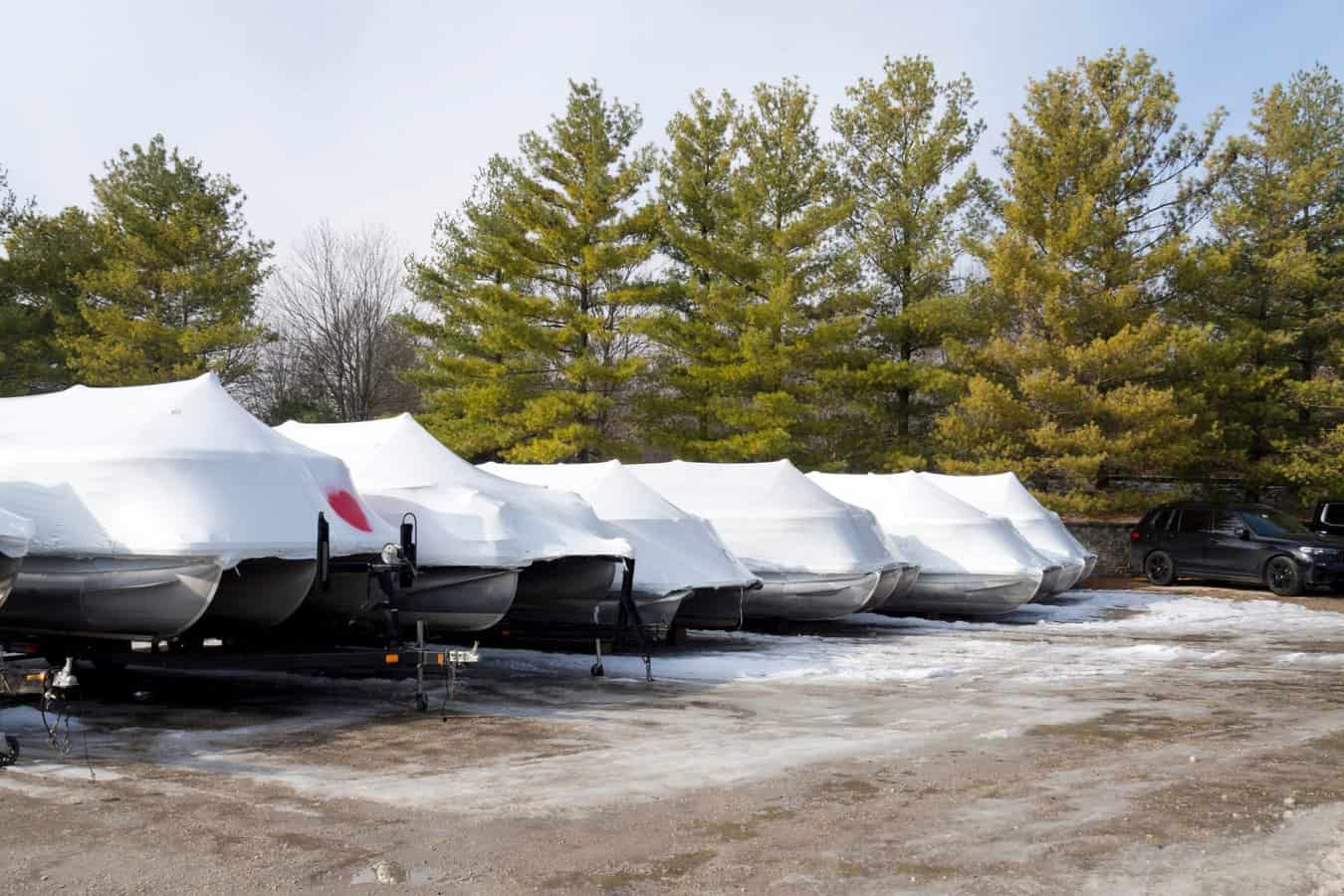Winterizing a pontoon boat is relatively easy and hassle-free, so there is no need to throw cash to the professionals to do it for you. This article offers a step-by-step guide on winterizing your pontoon boat, the materials needed, and some helpful information. Let’s cover it up!
Materials Needed To Winterize A Pontoon Boat
Before starting the winterizing process, make sure to have the following materials:
- Quality hull cleaner – removes all the stains and growth from the hull of the pontoon boat.
- Boat cleaner – and polish will bring the shine back to the boat, making it look shiny and new for summer.
- Pressure washer – a must-have for cleaning a boat.
- Fogging oil will prevent the engine components from corroding due to moisture.
- Fuel Stabilizer – prevent the fuel from breaking down in the tank when left for prolonged periods.
- Marine Engine oil – good quality marine oil is essential for winterizing a pontoon boat.
- Oil Filter – When changing the oil, it is recommended to change the oil filter; see the engine manual for the correct part number.
- Soft and stiff bristle brush- a brush with a long handle will assist in cleaning the hard-to-reach areas on the boat.
- Microfiber Cloth – To clean multiple surfaces scratch-free.
- Pontoon Boat Cover – a must-have to protect the pontoon boat during storage.
How To Winterize A Pontoon Boat
The following 7 steps will assist in winterizing a pontoon boat.

Step 1. Cleaning The Exterior Of A Pontoon Boat
Wash the boat’s exterior with a boat cleaner and a microfiber cloth. Keep a lookout for any signs of mold, stains, or anything that should not be there. For the dirtier areas and stains, use hull cleaner and a stiff bristle brush to remove the debris. Don’t apply too much pressure with the brush as it can scratch and remove the paint.
Apply polish or wax to the exterior to revitalize and bring back the original shine of the boat and pontoons. The more effort put into the boat at this point will result in a great-looking boat in the summer.
Step 2. Cleaning The Interior Of The Pontoon Boat
Now that the exterior is clean, it’s time for the interior. Empty the bins/lockers and remove the loose items from the boat, such as PFDs, fishing equipment, skis, ladders, and water toys. Removing all the loose items will prevent mold from forming in the winter months.
It is recommended to remove all the electronics such as depth finders and radios. These can be stored indoors where they will be warm and safe.
Remove and clean all the cushions and removable mats on the boat, and store them indoors. Wipe down the boat’s interior with a boat cleaner and a cloth. Once the interior is clean, leave all opening locker and hatches open and let the boat dry thoroughly in the sun.
Use a clean cloth or chamois to speed up the drying process and wipe down the boat. Ensure that no moisture or pooling water lurks in the boat as this could lead to mold.
Step 3. Fogging The Pontoon Boats Engine
Using quality fogging oil will ensure that the engine’s components are safe during the winter. Remove the air box by unbolting it or unlatching it (Refer to the engine manual) to expose the carburetor. Spray the fogging oil into the carburetor to cover all the surfaces and replace the airbox.
Remove the sparkplugs with a wrench and a plug socket and spray fogging oil through the sparkplug hole directly into the cylinder. Check the sparkplugs for any damage and replace them if needed, then re-insert the spark plugs in the engine.
The fogging oil forms a thin oily layer on the metal components and helps prevent corrosion from moisture in the air.
Step 4. Winterizing The Fuel Tank On A Pontoon Boat
The cold temperature can cause the moisture in the fuel tank to crystalize; hence water and fuel should not mix. To prevent this, fill the tank ¾ full, leaving ¼ empty for fuel expansion. Add a high-quality fuel stabilizer solution to the fuel and close all fuel valves between the tank and the engine.
Step 5. Changing The Oil For Winterizing A Pontoon Boat
Remove the oil drain-plug and drain all the old engine oil. Once the oil is out, remove and replace the oil filter. Replace the oil drain plug and fill the engine with quality marine-grade oil. Take care not to overfill the oil sump by regularly checking the oil dipstick during filling.
It is essential to do an oil change while winterizing as the old oil has all sorts of contaminants that will settle on the bottom and block engine ports.
Step 6. Disconnecting The Pontoon Boats Battery
To prolong the battery’s life, it is recommended that it be stored indoors during the winter. Disconnect both terminals from the battery and remove any retaining screws holding the battery in place. If possible, store the battery while connected to a trickle charger; this will prevent the battery from draining too low and damaging it.
Step 7. Covering The Pontoon Boat During Winter
Use a tarp or pontoon boat cover to protect the boat from the elements. Ensure that the boat cover is free of holes or rips as this will let the cold and moisture in. The cover should fit snug around the boat as it will have to be taunt to prevent water from pooling on it. Ensure that the exhaust is covered as the moisture can settle in the housing.
The second option will be to shrink-wrap the pontoon boat. Shrinkwrapping is more effective in keeping moisture out of the boat, but it is more expensive.
What Can Happen To A Pontoon Boat That Is Not Winterized
Suppose a boat will be subjected to freezing weather and has not been winterized. In that case, it could lead to a boat that will require repairs before going back into the water. In the cold of winter, water freezes and expands, which will damage anything when trapped inside.
Excess water will leak into areas that would remain dry, and any acidic waste or salts will speed up corrosion. Here are some details that should be prevented.
Cracks In The Engine Due To Freezing Water
Raw and fresh water-cooled engines that do not have their lines drained during winter storage can suffer from cracked components. This can include heat exchangers, engine block, hoses, and gaskets. When it gets too cold, it freezes and expands, and if there is no more room for this expansion, the component bears the brunt and cracks.
Using a quality anti-freeze can prevent this from happening. It has a much higher freezing point; thus, it is vital for winterization.
Un-Stabilized Fuel In The Tank
Gasoline will degrade and break down over time, causing different density layers in the fuel. If there is any amount of ethanol in the fuel, this will absorb water which could lead to engine knock when it is started up in the spring. When the fuel gets to -25°F, it starts to thicken, damaging the fuel line, filters, and the tank itself.
Fresh Water System And Plumbing System Damage
If the pontoon boat has a freshwater system that is not drained during the winter, the hoses, sink fitting, drainpipes, and holding tanks are at risk of cracking. To prevent this, drain the system and ensure all pumps and lines are empty.
The Cold Can Damage The Boat Battery
Suppose a lead-acid battery is left on the boat and is subjected to freezing temperatures. In that case, it can freeze and damage the battery. A battery that is left connected will eventually discharge to the point that it will no longer hold a charge. A Lithium battery luckily does not freeze. But they should be stored at 50% charge with no load. If a Lithium battery discharges too low, it will affect its life expectancy.
It is highly recommended to remove all the batteries from the boat during winterization and store them indoors.
An Uncovered Boat Can Be Damaged During Winter
If a boat is left to the elements during winter and it does not have some sort of cover on it, snow, ice, and water will seep in through the deck fittings, doors, and windows. If the water settles in tight spaces in lockers and crevasses, it can freeze and expand, causing cracks.
Mildew And Mold Build Up On The Boat

A boat that is unventilated and is left with moisture trapped inside can lead to mold and mildew growth. This does not pose much risk to the electronic and mechanicals but will affect cushions and canvas, not forgetting the pungent smell that will emanate from the vessel.
Leaves, dust, and moisture pile up on the deck and will eventuality begin to rot, and this will leave stains. Covering a boat will be able to solve most of these issues.
Choosing A Boat Cover Or Shrink Wrap For winterizing A Pontoon Boat
Boat covers are great, and the covers that come with the boat are ventilated and fit perfectly. Though boat covers are a must-have, they are best suited for short-term protection from sudden rainstorms and a few days at the dock. The ventilation feature that boat covers have is not well suited for winter storage. The moisture that enters is ideal for mold and mildew.
There are more durable covers on the market for winterization, but they too can have fitting issues. A Tarp covering will work, but it leaves room for the little critters looking for warmth, and this can cause more damage.
Having a boat shrink-wrapped for the winter sounds like a costly exercise, and it can be. The cost of shrink-wrapping vs. possible mildew removal in a poorly covered boat is roughly the same. Professional mildew removal can range from $8 to $30 per foot, and a professional wrap costs $14 to $25 per foot.
The benefits of shrink-wrapping a boat are that no moisture, dirt, or pests can gain access. The boat will be in the same condition as it was left four months prior. Wrapping a boat can be made part of the DIY winterization for a boat as there are many DIY wrapping kits available.
How To Bring A Pontoon Boat out of Winter Storage
Below is a brief overview of what must be done when taking a pontoon boat out of winter storage.
- Inspect the Boat– After removing the cover or wrap, inspect the boat for any damage. Check all moving parts and lights.
- Inspect the engine – Check all the fluids and top up where necessary. Check sparkplugs, hoses, and filters for damage and reinstall the battery.
- Clean the boat– Give the boat a quick once-over clean to remove any dust and debris.
- Check safety equipment– check all the PFD and fire extinguishers.
Conclusion
Winterizing a pontoon boat is easy and can be done in a short period of time. The winterizing steps listed in this article will assist you in every step of the process, from cleaning the hull to covering the boat. Winterizing a boat is crucial to the vessel’s longevity. It prevents unwanted damage to the boat, the engine, or the electronics.
Once the pontoon boat is winterized, all that is left to do is to plan the springtime inspection, fill the cooler box and have some fun in the sun. Enjoy.
Project “Tucking Her In For Winter” Boating
Check out our article on: How To Dewinterize A Boat: (13 Step Checklist)

